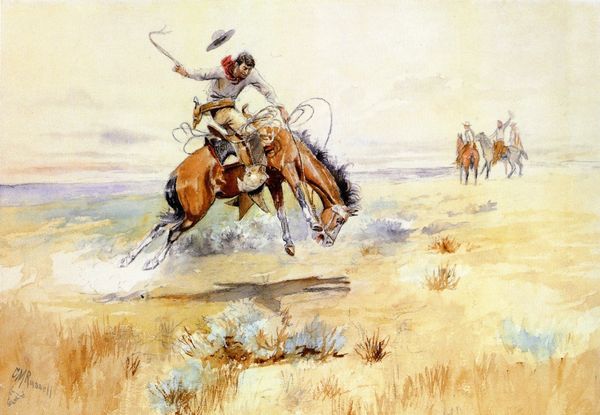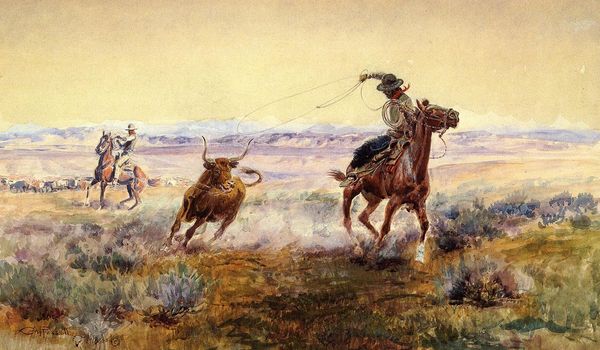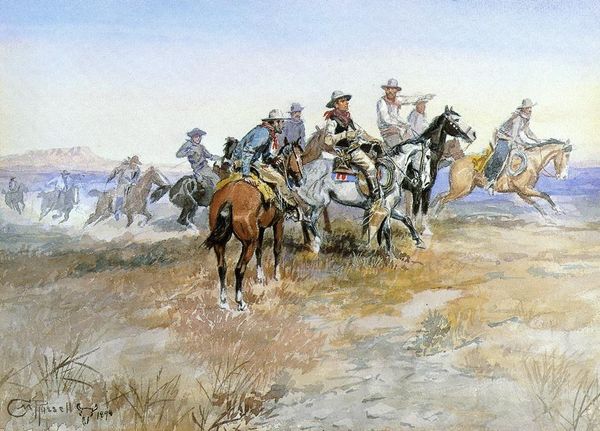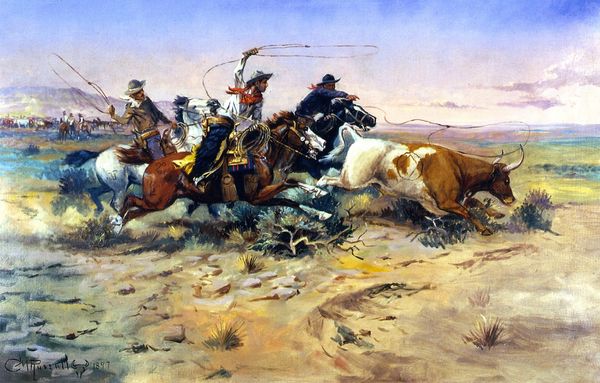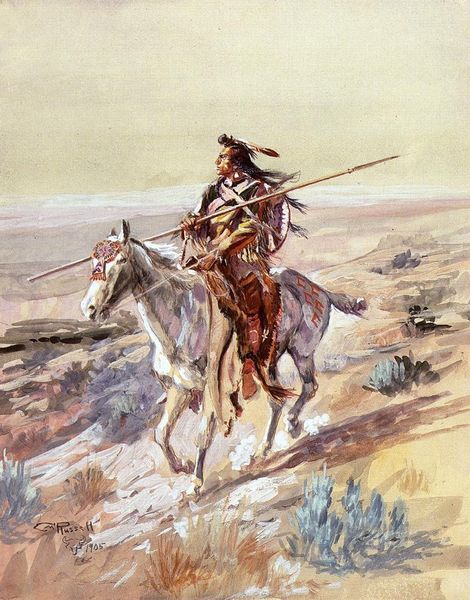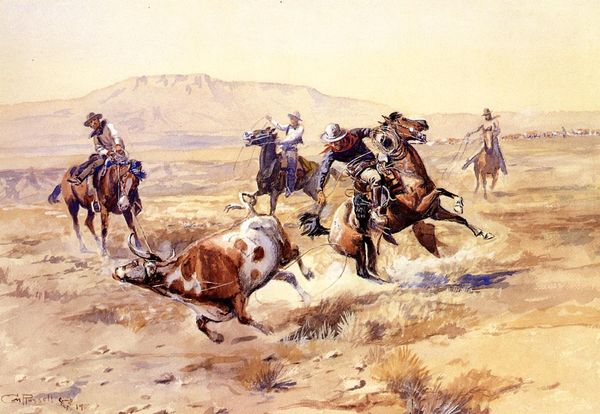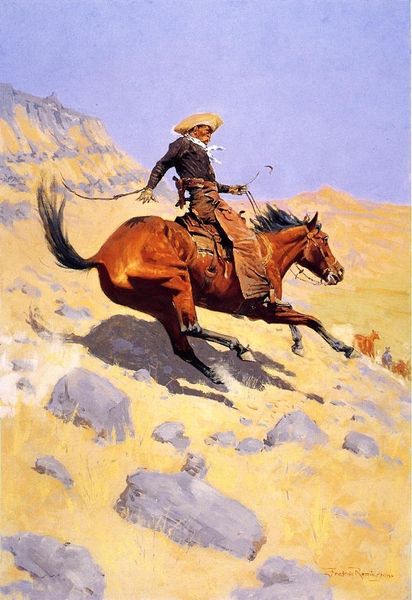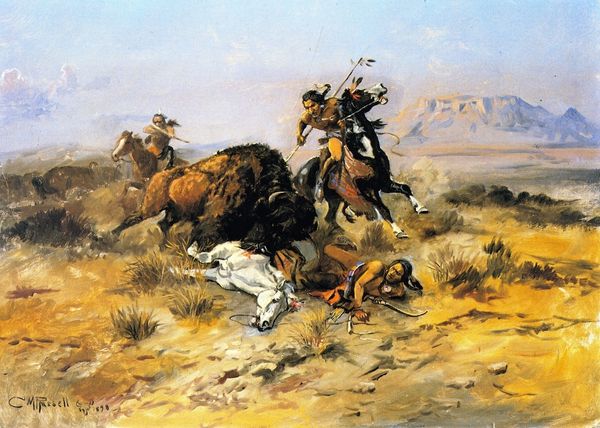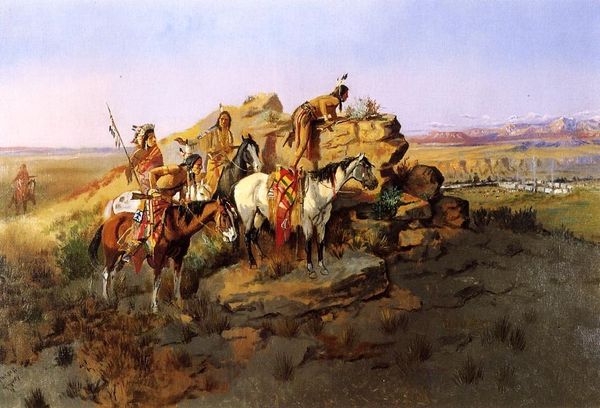
painting, oil-paint
#
narrative-art
#
painting
#
oil-paint
#
landscape
#
figuration
#
oil painting
Copyright: Public domain
Charles M. Russell made "Wild Meat for Wild Men" with oil on canvas, a common technique in his time. Russell's work provides insight into the romanticized vision of the West in the late 19th and early 20th centuries. Oil paint allowed Russell to capture the drama and action of the hunt, but it also served to create an image palatable to Eastern audiences, reinforcing popular ideas about cowboys and Native Americans. The labor involved in painting itself – the physical act of applying brushstrokes to canvas – is less visible here than the labor depicted: the dangerous work of the hunt. However, this belies the true cost of that labor. The painting romanticizes the act of hunting buffalo, obscuring the real story, that its industrial-scale slaughter led to the near extinction of these animals. The buffalo hunt was a traditional practice for sustenance, but with colonization came commodification. Ultimately, understanding the materials and social context behind "Wild Meat for Wild Men" allows us to unpack the complex layers of history, labor, and representation embedded within this seemingly straightforward image.
Comments
No comments
Be the first to comment and join the conversation on the ultimate creative platform.

